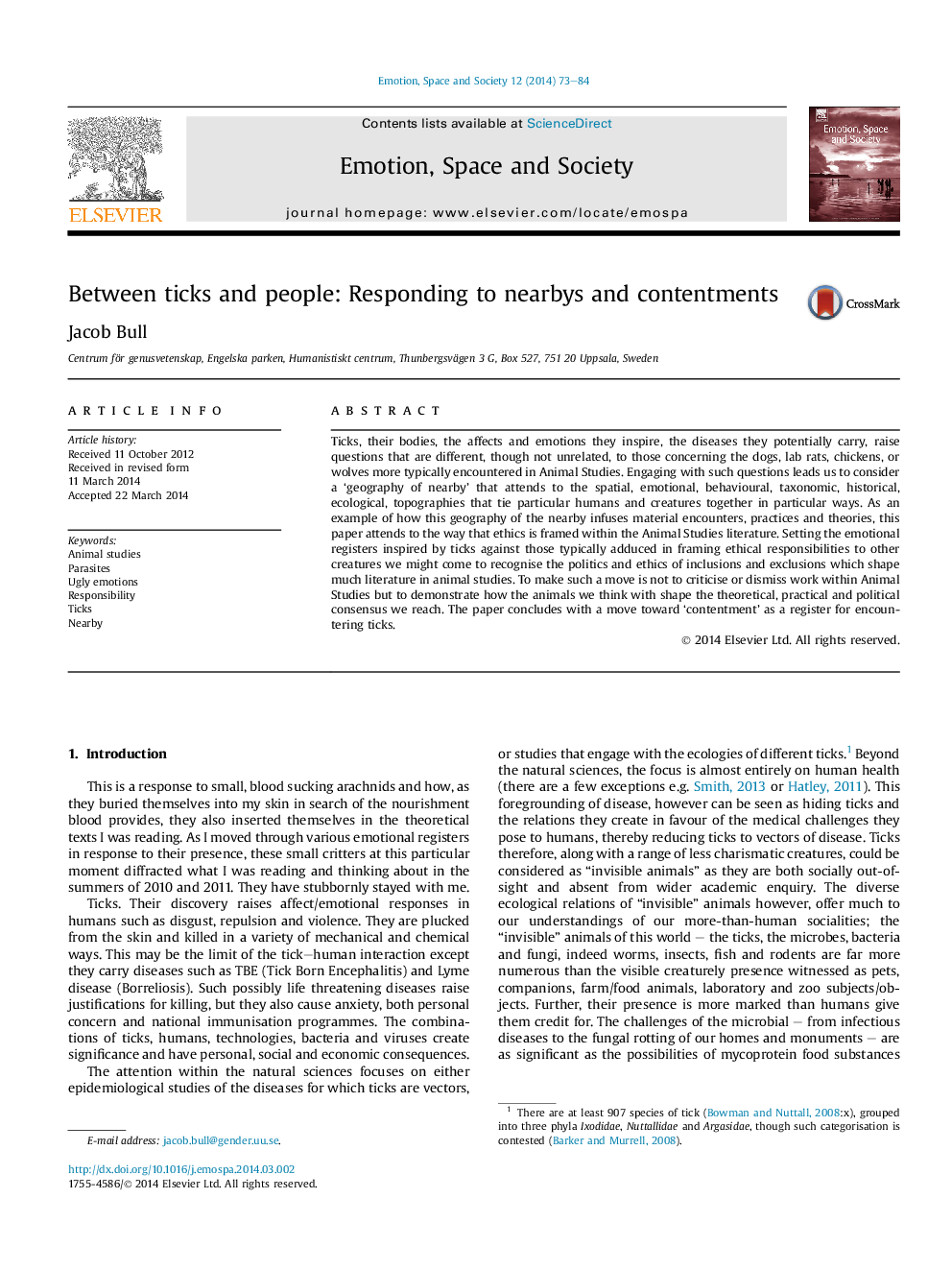| کد مقاله | کد نشریه | سال انتشار | مقاله انگلیسی | نسخه تمام متن |
|---|---|---|---|---|
| 946638 | 1475635 | 2014 | 12 صفحه PDF | دانلود رایگان |
Ticks, their bodies, the affects and emotions they inspire, the diseases they potentially carry, raise questions that are different, though not unrelated, to those concerning the dogs, lab rats, chickens, or wolves more typically encountered in Animal Studies. Engaging with such questions leads us to consider a ‘geography of nearby’ that attends to the spatial, emotional, behavioural, taxonomic, historical, ecological, topographies that tie particular humans and creatures together in particular ways. As an example of how this geography of the nearby infuses material encounters, practices and theories, this paper attends to the way that ethics is framed within the Animal Studies literature. Setting the emotional registers inspired by ticks against those typically adduced in framing ethical responsibilities to other creatures we might come to recognise the politics and ethics of inclusions and exclusions which shape much literature in animal studies. To make such a move is not to criticise or dismiss work within Animal Studies but to demonstrate how the animals we think with shape the theoretical, practical and political consensus we reach. The paper concludes with a move toward ‘contentment’ as a register for encountering ticks.
Journal: Emotion, Space and Society - Volume 12, August 2014, Pages 73–84
